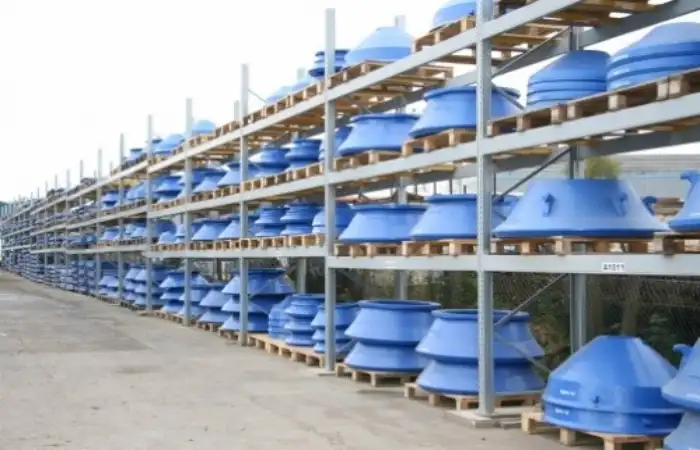Crushers are essential equipment in various industries, from mining to construction. To ensure optimal performance and efficiency, it’s crucial to pay attention to the wear parts of crushers. These parts undergo significant wear and tear due to the harsh operating conditions they endure. By understanding the key crusher wear parts and their maintenance, operators can maximize the lifespan and efficiency of their crushers.
Five Essential Crusher Wear Parts:
Jaw Plates
Jaw plates are crucial components in jaw crushers, responsible for crushing materials. Over time, these plates wear out due to continuous friction and impact with the processed material. Worn-out jaw plates can result in inefficient crushing, increased energy consumption, and even damage to the crusher itself.
Regular inspection of jaw plates is necessary to identify signs of wear such as thinning or cracks. When wear reaches a certain level, replacing the jaw plates becomes imperative. Choosing high-quality jaw plates made from durable materials like manganese steel ensures longevity and optimal performance.
Mantles and Concaves
In cone crushers, mantles and concaves play a vital role in crushing operations by providing a crushing chamber where the material is crushed between a stationary and a rotating piece. These components endure extreme pressure and abrasion, leading to wear over time.
Inspecting mantles and concaves for wear patterns and excessive erosion is essential. When worn beyond acceptable limits, replacing them is necessary to maintain the crusher’s efficiency and prevent damage to other components. High-grade manganese or alloy steel mantles and concaves are preferred for their durability and resistance to abrasion.
Blow Bars
Impact crushers rely on blow bars to crush materials efficiently by delivering high-speed impacts to the incoming feed material. Blow bars are subject to wear from repeated impacts with the processed material and foreign objects. Worn blow bars not only reduce crushing efficiency but also increase the risk of catastrophic failure.
Regular inspection of blow bars for wear, cracks, or excessive wear at the impact surfaces is crucial. When wear exceeds acceptable limits, replacing the blow bars becomes necessary. Opting for high-quality blow bars with the right composition and hardness enhances wear resistance and prolongs their lifespan.
Rotor Tips
Rotor tips are critical wear parts in VSI (Vertical Shaft Impactor) crushers responsible for accelerating the feed material to high velocities for efficient crushing. Due to the abrasive nature of the processed material, rotor tips experience significant wear and erosion over time.
Periodic inspection of rotor tips for wear, rounding, or chipping is essential to ensure optimal crusher performance. When wear reaches a certain point, replacing the rotor tips becomes necessary to maintain crushing efficiency and product quality. Choosing durable rotor tips made from materials like tungsten carbide ensures extended wear life and consistent performance.
Toggle Plates
Toggle plates play a crucial role in the operation of jaw crushers by transmitting the crushing force to the pitman and protecting the crusher from overloads. Continuous operation and frequent adjustments can lead to wear and fatigue of toggle plates, compromising crusher performance and safety.
Regular inspection of toggle plates for signs of wear, cracks, or deformation is essential. When wear is significant, replacing toggle plates is necessary to prevent catastrophic failures and ensure safe operation. High-quality toggle plates made from hardened steel or alloy materials offer superior durability and reliability.
In conclusion, maintaining essential crusher wear parts is paramount for ensuring optimal performance and prolonging the lifespan of crushers. Regular inspection, timely replacement, and choosing high-quality wear parts are essential practices for maximizing crusher efficiency and minimizing downtime and maintenance costs.
